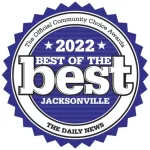Frequently Asked Questions
A full-arch implant supported teeth reconstruction is truly a live transformation procedure. It is a procedure where all the teeth in the arch are replaced by a ceramic-zirconia bridge supported by 4 to 8 implants. With the use of computer software we are able to acquire records of the patients’s face, lips, mouth, teeth, and jawbone with a 3D X-ray. With this information, utilizing specialized software, the process of designing the smile and ideal position of the replacement teeth is started. This workflow allows us to work with a specialized Dental Laboratory to then manufacture a customized transitional healing bridge that will be installed in the patient’s mouth the same day that the teeth are removed and the implants placed. Because this process is pre-planned through software, we manufacture the replacement bridge and a series of surgical guides to transfer with the most accuracy the digital plan from the software into the patient’s mouth. This process helps with the most accuracy in obtaining the perfect bite and smile in one appointment. This procedure is performed under IV sedation to facilitate the best patient experience. Once the patient is more aware after the sedation, they will be able to witness their new transformative perfect smile!
Once a patient and the doctor decide that a full-arch implant supported reconstruction is the treatment that will provide the right solution to the patient’s needs, the acquisition of records starts and within weeks all the necessary planning, fabrication of guides, and customized teeth replacement will be ready in the Periodontists office to do the procedure. Depending on the number of remaining teeth, if both arches are being treated on the same day, and any other procedures necessary to prepare the jawbone to receive the implants, the procedure could take from 2 to 8 hrs. Since the procedure is completed on the same day, you will receive a perfect smile and a perfect bite! Waiting a few months after the initial procedure with the customized transitional teeth is advisable for allowing the jawbone and the soft-tissue to heal and adjust, then proceed with the final ceramic-zirconia bridges.
Dr. Arauz is a Board Certified Periodontist and Dental Implant Surgeon. A full-arch implant supported reconstruction requires in depth knowledge and surgical experience in Dental Implant Surgery. In order for a full-arch reconstruction to be successful not only the day of the procedure, but successful for life, many principles and variables need to be considered and respected during the planning and execution phase. Even though we can provide a great experience and result for a patient, the surgical skills required to perform these procedures are really advanced. The same is true when considering single tooth replacements or smaller bridges replacing no more than 3 teeth supported by dental implants in any area of the mouth, front and/or back. What makes the Caroline DSC a very unique Dental Implant Center is the comprehensive approach that is considered for every patient that is treated. From the patient’s medical history, fears and anxiety, teeth supporting structures, to case selection and choosing the most beneficial treatment solution for every patient. Also, The periodontal health of a patient is fundamental to the long-term success for a Dental Implant not becoming infected once it is put into function. The combination of the education as a Periodontist, knowledge and experience Dr. Arauz has, combined with the use of the latest digital technology and records, 3D X-rays, digital surgical planning and smile design, we predictably increase success rates by better controlling accuracy and precision of the procedures performed that could potentially compromise treatment results. One of these technologies is a Robotic-Assisted Dental Implant Placement System, the Yomi Robot.
The Yomi is a robotic device, similar to the Da Vinci Surgical Robot in Medicine, that is used for the precise planning of the teeth to be replaced with Dental Implants. The robot assists Dr. Arauz with the most accurate placement of the Implant to provide the best support to each tooth being replaced. In order for a tooth to be successfully replaced with a Dental Implant, the forces that will be transferred from the tooth to the implant have to be taken into account. This is the concept of the final tooth 3D position determining the dental implant placement, where the tooth replacement is planned in the Yomi 3D software in the ideal position to replace the missing tooth or group of teeth, then Dental Implants are carefully selected in size and shape to be able to provide the best biomechanical support for the future tooth. This goes directly related to the amount of bone height and width in the site of the jawbone where the implant needs to be placed at an exact 3D position,angulation and depth. If there is insufficient bone to support the implant on that specific site, it needs to be reconstructed before or at the time of placing the Dental Implant. Bone reconstruction procedures are one of the many Dental Implant procedures Dr. Arauz specializes in. Through the use of 3D X-rays and special sensors, the Yomi Robotic System assists Dr. Arauz to transfer the exact 3D digital planning from its software into the patient’s jawbone with the most accuracy and precision. When implants are guided with the Yomi Robotic System into position, we increase the long-term success by respecting all the principles mentioned above. The advantages of using the Yomi for Dental Implant Surgery placement are: immediacy, where the patient does not need to wait to have the procedure done because there is no need to wait to fabricate any guides for Dental Implant placement, the Yomi and its software is the Implant placement guide. Also, teeth can be extracted and replaced with a transitional crown the same day using the Yomi. With the Yomi, we can do more minimally invasive Dental Implant placements, accomplished by the 3D X-ray and planning software that allows for not having to cut the gum of the patient open, leading to better, faster healing with minimal discomfort and risks of complications.
-

What are the benefit of using a robot for dental implant surgery?
-

What is the difference between a regular cleaning and a periodontal cleaning?
-

What is bone grafting in dentistry?
-

What is PRGF?
-

What is the timeline for a dental implant?
-

How important is oral hygiene?
-

What are the advantages of choosing a dental implant over a bridge?
-

What is a Periodontist?




